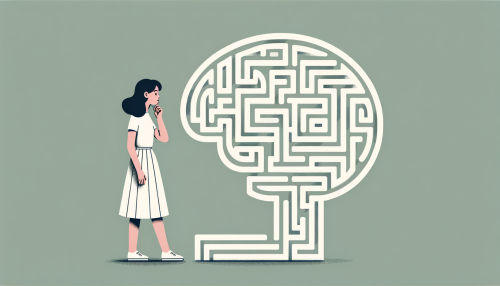Introduction
In the vast expanse of human emotions, there exists a spectrum of feelings that oscillate between the peaks of euphoria and the valleys of despair. This emotional landscape is a fundamental part of our existence, shaping our perceptions, actions, and interactions. However, when these emotional fluctuations become extreme, persistent, and interfere with daily life, they may signal the presence of mood disorders. This article aims to shed light on these often misunderstood conditions, exploring their symptoms, types, and potential treatment options.
Identifying Symptoms

The first step towards understanding mood disorders is recognizing their symptoms. These manifestations are as diverse as the individuals they affect, yet some common threads weave through the tapestry of these conditions. The most prevalent symptoms include persistent feelings of sadness, emptiness, or irritability, coupled with physical and mental fatigue.
Moreover, individuals may experience significant changes in their sleeping and eating patterns, ranging from insomnia and loss of appetite to excessive sleep and overeating. These alterations often coexist with a diminished interest in activities once enjoyed, leading to social withdrawal and isolation.
Cognitive symptoms are also a significant part of mood disorders. Individuals may struggle with concentration, decision-making, and memory. In severe cases, recurrent thoughts of death or suicide may pervade their minds, signaling a critical need for immediate professional intervention.
Types of Mood Disorders
Mood disorders are not a monolithic entity but a collection of diverse conditions, each with its unique characteristics. Major Depressive Disorder (MDD), characterized by prolonged periods of intense sadness and loss of interest, is one of the most common types.
Bipolar Disorder, on the other hand, is marked by alternating episodes of mania (extreme elation and high energy) and depression. This emotional rollercoaster can be exhausting and disorienting for the individual and those around them.
Dysthymia, or Persistent Depressive Disorder, is a chronic form of depression where the individual experiences a depressed mood for most of the day, for more days than not, for at least two years.
Cyclothymic Disorder, a milder form of Bipolar Disorder, involves periods of hypomanic symptoms and depressive symptoms. Lastly, Mood Disorder due to a medical condition or substance-induced mood disorder are conditions where the mood symptoms are a direct result of a physical illness, medication, drug abuse, or exposure to toxins.
Effective Treatment Options
The labyrinth of mood disorders may seem daunting, but there are numerous effective treatment options available. Psychotherapy, or talk therapy, is a cornerstone of treatment. Cognitive Behavioral Therapy (CBT), for instance, helps individuals identify and change negative thought patterns that lead to depressive or manic symptoms.
Pharmacotherapy, or medication, is another crucial component of treatment. Antidepressants, mood stabilizers, and antipsychotics can help manage the symptoms of mood disorders. However, these medications should always be taken under the supervision of a healthcare professional due to potential side effects and the need for regular monitoring.
In addition to these conventional treatments, lifestyle modifications such as regular physical activity, a balanced diet, adequate sleep, and stress management techniques can significantly improve the quality of life of individuals with mood disorders. In severe cases, Electroconvulsive Therapy (ECT) or Transcranial Magnetic Stimulation (TMS) may be considered.
Conclusion
In conclusion, mood disorders are complex conditions that require a nuanced understanding and approach. Recognizing the symptoms, understanding the different types, and being aware of the treatment options are crucial steps towards managing these disorders. With the right support and treatment, individuals with mood disorders can lead fulfilling lives, proving that these conditions, while challenging, are not insurmountable.





